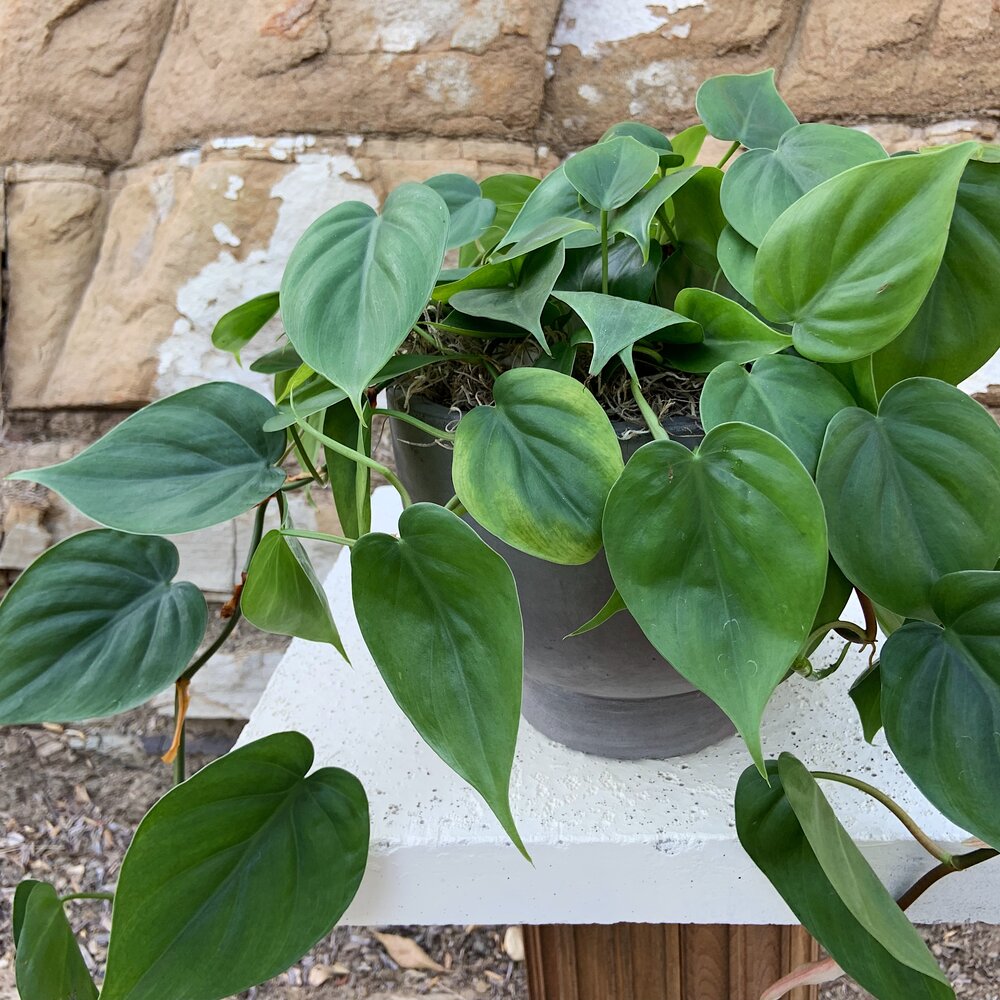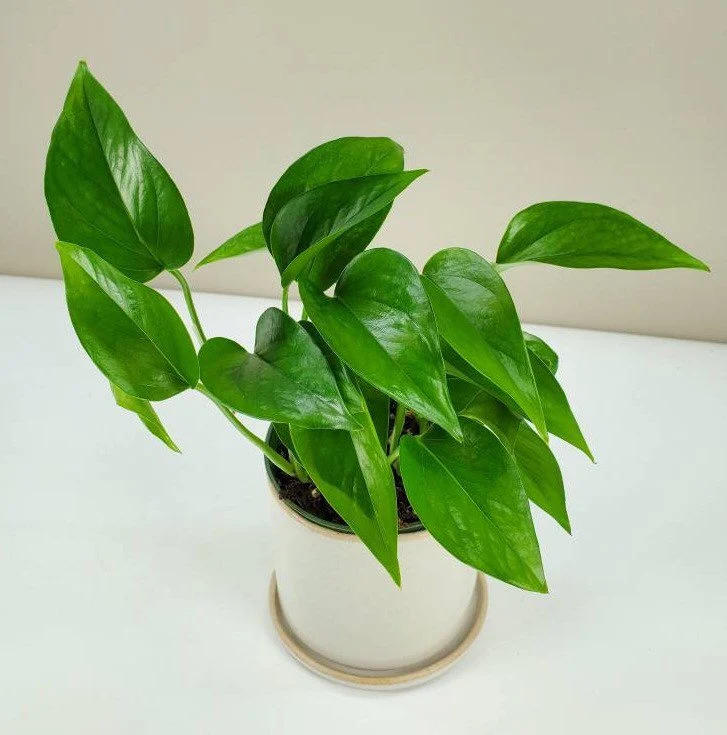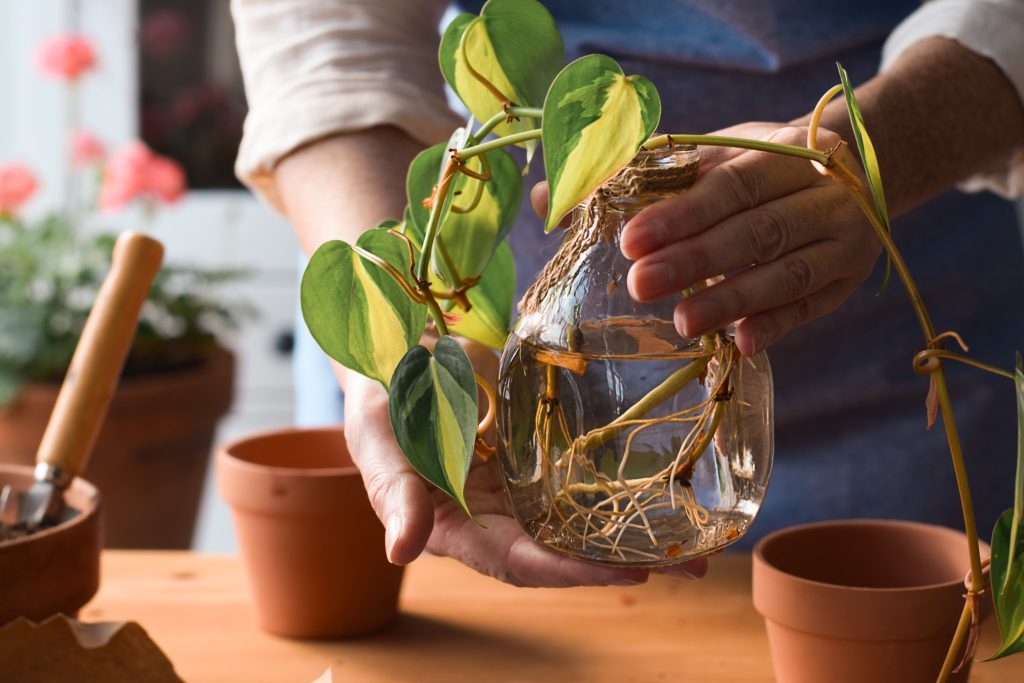The ability of a pothos plant to cascade is one of the most appealing features of the houseplant. When it comes to ambiance, the pothos has a sophisticated and opulent appearance that sets them apart from other houseplants.
Green, white, and yellow are just a few of the amazing colors available on this variegated houseplant. Because of its low maintenance and hardiness, this plant is a popular choice for new gardeners.
The Jade Pothos variant is a climbing plant with heart-shaped foliage. The pothos plant is cold tolerant and drought tolerant. It’s an evergreen plant that can grow to be over a meter tall and scrambles using aerial roots that cling to surfaces.
It’s a large, lush tropical plant that prefers to thrive in a large space.
This plant thrives at a temperature of 25 degrees Celsius. It must also be carefully protected from heating and air conditioning vents. Extreme temperatures, simply put, should be avoided.
Jade Pothos Plant Explained

The jade pothos houseplant has a high wind resistance, making it suitable for usage in patios, yards, and gardens. All it needs for growth and upkeep is a somewhat shaded location with a little indirect sunlight.
If you don’t like brightly colored houseplants, this one is worth a try because of its lush green and distinctively shaped foliage.
We’ve put together some facts that will be of interest to you, as well as some care guidelines, growing tips, and step-by-step propagation methods. You will discover about the Jade Pothos if you continue reading.
| Common Name | Jade Pothos |
| Scientific Name | Epipremnum aureum |
| Plant Type | Tropical |
| Plant Family | Araceae |
| Light | Indirect sunlight |
| Soil Type | Well-drained soil |
| Foliage Color | Green |
| Temperature | 25° C |
| Soil ph | Neutral |
| Native | Asia |
| Toxicity | Poisonous |
Jade Pothos Propagation
This step is critical for your pothos plant’s multiplication. It can also be entertaining and a good idea for a gift for family and friends over the holidays. We will demonstrate how to propagate the jade pothos without soil using the cutting method.
Propagation materials
- Jade Pothos vine
- Scissors that have been sterilized
- Culture pot
- Long jugs of freshwater.
The steps involved in propagating the jade pothos:
We’ve established a simple, step-by-step method for propagating jade pothos. When done correctly, it should be enjoyable and turn out nicely.
- Step 1: Separate the vines cut from the parent plant and cut the long runners of the plant uniformly around the pot.
- Step 2: Remove the leaves from the plant, leaving the nod because here is where the new roots will grow.
- Step 3: Fill new long containers with freshwater, at least 3, depending on how many new jade plants you desire.
- Step 4: Because pothos requires both air and water to thrive, you can change the water in the container every day or every two days.
- Step 5: Keep these containers warm since roots require warmth to thrive.
- Step 6: The roots should have started to form nicely after around three weeks.
- Step 7: Repot the plant in a culture pot with stones and soil mixture and set it in a location with indirect sunlight.
Care Guide For Jade Pothos
Although the pothos plant is low-maintenance, it does require some attention to stay healthy. Keep these instructions in mind when caring for your jade pothos.
1. Light
The plant will thrive in a well-lit location, but it will not tolerate direct sunshine. If you’re going to keep your pot inside, make sure to rotate it often so that all of the foliage gets ample light.
2. Water
For starters, you should only water the pothos plant twice a week. The demand for jade pothos, on the other hand, might fluctuate over time, which is why watering the plant should be done with prudence. Humidity, season, and the location in which the pothos plant is produced can all influence the requirements. Check for drooping leaves, wilting leaves, and dry soil, among other things, to see if and when your plant needs water.
3. Soil
A particular potting mix and well-drained soil are required. The soil must be damp, not waterlogged. Simply dip your finger into the soil or place your hand on the soil surface to determine the soil’s dryness or wetness.
4. Humidity
Pothos houseplants flourish in high-humidity environments because they are tropical plants. The Jade pothos, on the other hand, can tolerate dry air, but the caregiver must still bear this in mind.

5. Temperature
Although the jade pothos is a resilient plant, it should not be exposed to extreme weather. The plant suffers harm and the leaves do not grow properly when the air is too hot or too cold.
6. Fertilizer
When your plant is actively developing, it is recommended that you fertilize it. This usually happens in the summer or early spring. You should keep track of the products you give your fertilizer and not change them too frequently.
Jade Pothos Growing Suggestions
Read through these suggestions we have for you on how to grow your jade pothos.
- If you’re not sure how much water to use to properly water your plant, use a watering container, spray bottle, or measuring cup with an appropriate measurement. Make sure to thoroughly clean these containers to prevent chemicals and essential oils from contaminating your leaves.
- To guarantee that the water reaches the roots, poke holes in the dirt with your finger and slowly pour the appropriate amount of water into the soil.
- Plants that grow quickly, such as pothos, will need to be repotted frequently. If the roots start to seep out of the drainage hole, you should acquire a new pot that is a couple of inches larger than the old one and fill it with freshly mixed soil.
- When propagating a vine, dipping it whole in a container of water to pull the roots out may not be the best option. Cut between the stems and remove the leaves without damaging the “nod or the eye” in the center of the leaf.
Jade Pothos FAQs
We understand you have some concerns about your jade pothos. Here are some of the questions you could have about your plant’s care, which we have provided answers to.
Is trimming my Jade pothos necessary?
Yes, because the Jade pothos is a climbing houseplant, you should prune it regularly to keep it in good health, and also a nice shape.
Is the Pothos a simple plant to look after?
Yes, of course! The pothos is a plant that you can care for without needing to be a gardening expert. You should enjoy taking care of your pothos if you have the correct knowledge, which we have supplied for you in this article.
Conclusion
The pothos is a friend to all because it can be easily maintained and cared for. The foliage hues are neutral, making them ideal for folks who don’t like brightly colored houseplants.
Despite this, it has a refined appearance that makes it irresistible. Watering, trimming, and repotting as needed are all good ways to care for this plant, and if you want to propagate it, follow the procedures we’ve provided.

